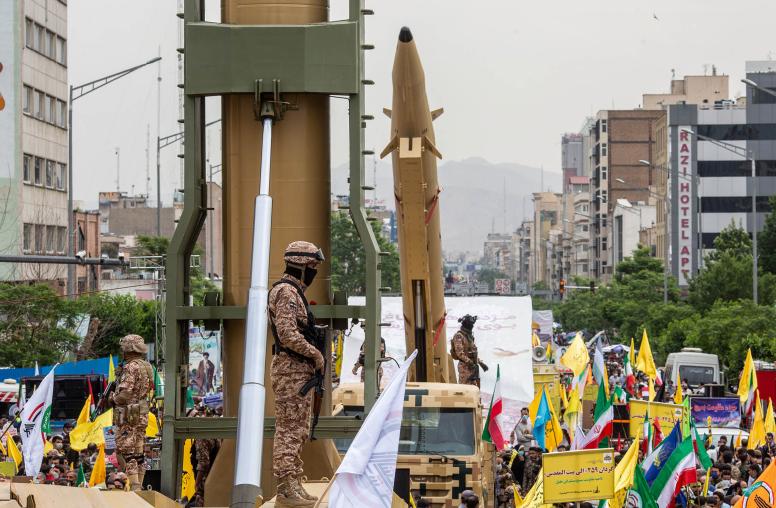Iran Timeline: Since the 1979 Revolution
Iran, proud and passionate, has been a conundrum since its 1979 revolution. It stunned the world by introducing Islam as a form of modern governance. It rattled the region by exporting its zealous ideology; it sired or sponsored militant allies from Lebanon to the Gulf. It also unnerved both East and West by defiantly challenging international norms. For decades, a confluence of challenges—political and cultural repression, menacing rhetoric, and defiance over its nuclear program—complicated dealing with the Islamic Republic. The patterns of Iran’s four-decade revolution—whether in domestic politics, foreign policy, the economy, or social sphere—have often been determined by the dominant political faction of the day. Iran’s revolution has passed through at least five phases:
The first phase was the Khomeini decade from 1979 until the ayatollah’s death in 1989. It was a tumultuous period of revolutionary extremes that included killing off supporters of the ancien regime, taking foreigners hostage, and fostering zealotry across the Islamic world. The turmoil was exacerbated by an eight-year war with Iraq that became the Middle East’s bloodiest modern conflict. It produced more than one million casualties (deaths and injuries). Iran was widely viewed as an international pariah throughout the revolution’s first decade.
The second phase coincided with the two terms of President Akbar Hashemi Rafsanjani, from 1989 until 1997. The revolution’s early passions were replaced by a hard-earned pragmatism, produced in part by excesses that backfired against the clerics and exhausted the population. Under Rafsanjani, arrogance gave way to a conservative realism. The government of God increasingly ceded to secular statecraft.
The third phase between 1997 and 2005 coincided with the reformist era of President Mohammad Khatami, a dark horse former cabinet minister who tapped into the groundswell of interest in political openings. The government improved relations with its own people as well as the outside world. Iran temporarily had a freer press, freer speech, wider debate, relaxed social restrictions and a burgeoning civil society. But parliament failed to legislate reforms. By the end of Khatami’s two terms, a political schism had developed between the regime headed by the supreme leader and the government headed by the president.
The fourth phase between 2005 and 2013 coincided with the presidency of Mahmoud Ahmadinejad. The little-known mayor of Tehran won an upset election over Rafsanjani. The emergence of hardliners reflected three broader shifts: Disillusionment with politics led many, especially young Iranians and women, to boycott the poll. Public anger swelled against the clergy, especially Rafsanjani, for corruption and failing to improve the average Iranian’s life in a quarter century. And a second generation of revolutionaries hardened by the Iran-Iraq War, largely laymen, began to challenge the clerics who ended the monarchy.
The fifth phase began with the 2013 election of President Hassan Rouhani, a cleric and former national security advisor. In a field of six candidates, he campaigned on a platform of “hope and prudence” to end the economic crises and resolve the international showdown over Iran’s nuclear program. Rouhani represented the rise of realists and centrists in both foreign and domestic policies. He worked to undo years of economic mismanagement bringing down inflation from nearly 40 percent to under 10 percent in his first term.
Rouhani’s chief achievement during his first term was reaching an agreement with six world powers—Britain, China, France, Germany, Russia, and the United States—over Iran’s controversial nuclear program. Iran agreed to dismantle facilities, reduce enrichment and allow U.N. inspections in exchange for sanctions relief. The 2015 deal, known as the Joint Comprehensive Plan of Action (JCPOA), was slow to deliver economic benefits. In 2017, Rouhani won a second term with 57 percent of the vote. President Trump’s withdrawal from the nuclear deal in May 2018 jeopardized Rouhani’s legacy.
This timeline was assembled with the help of graphic research by Lindsay Jodoin and Farah Oraby, and editorial research by Garrett Nada.



